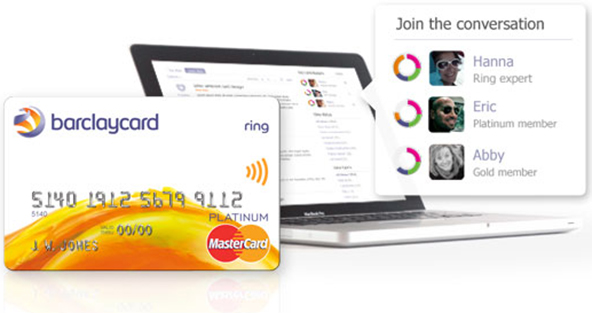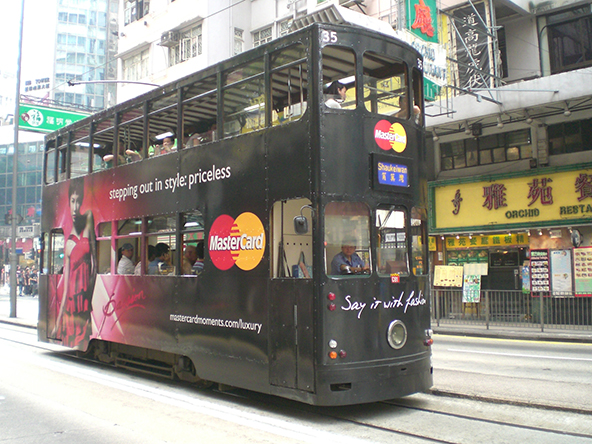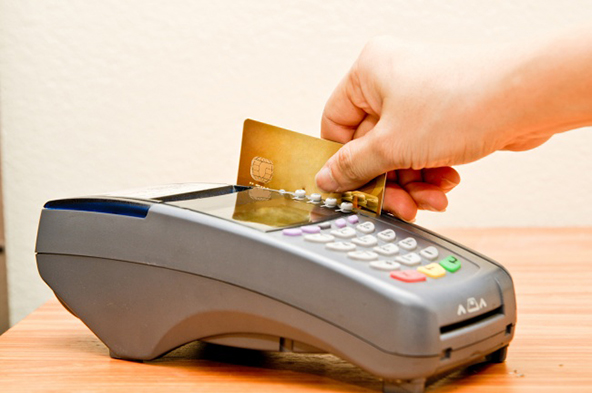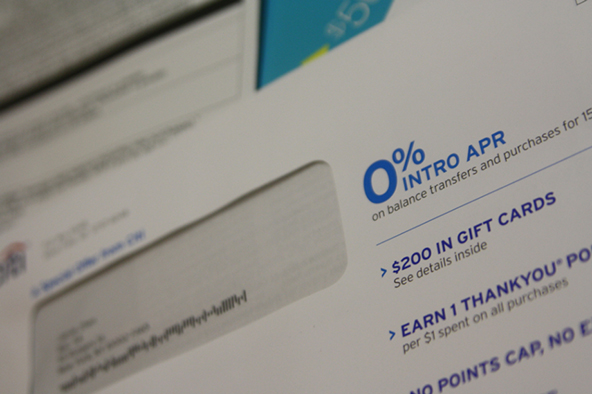When Credit Card Companies Try Hard to ‘Get’ Social Media

Felix Salmon is having some fun with Barclaycard’s “first ever crowdsourced credit card” that is “built on a community” of “incredibly happy, healthy, outdoorsy types who live only in bright sunshine” and with the issuer’s efforts to get them to “join the conversation.” In fact, Salmon is quite cynical about banks’ efforts to “get” social media in general.
Now, we can’t really hold Salmon’s distrust of healthy people who live in bright sunshine against him, for he hails from Scotland where this blogger has spent six months in his younger days and can testify to the deficiency of the commodity in question in this otherwise beautiful country. Moreover, I share most of Salmon’s cynicism toward card issuers engaged in “creating conversational blog post campaigns,” posting cool tweets and other things of that nature. But couldn’t the reason be that my sojourn in Scotland has left a deeper impact than I had realized? Perhaps concepts like crowdsourced credit cards and social media engagement of various sorts aren’t as outlandish to other people as they are to me and Salmon? After all, I am the type of person who makes financial decisions based on available data, not on what others are saying, but I don’t think I’m representative of the population at large and I don’t think that Salmon is either. And unlike Salmon, I think that the issuers may be on to something here, although they do need some practice.
Barclaycard Ring
I did review Barclaycard Ring, the crowdsourced credit card at issue, when it was introduced more than a month ago and liked it. Its rates and fees are reasonable and clearly communicated. Salmon agrees with me:
Which is not to say you shouldn’t apply. This card has an 8% APR, and no penalty APR. You miss a payment? You default on some other credit card debt? Your APR stays at 8%. For “revolvers” — people carrying a balance — this has got to be one of the cheapest credit cards out there, and certainly one of the least dangerous. The fee schedule is the one place where you don’t find gimmicks: no 0% APR balance transfers (with 3% up-front fee hidden in the small print), no hugely complicated reward program you’re never going to use, no annual membership fee which you have to mentally amortize against the perceived value of all those hypothetical rewards.
So what’s his problem then? Well, here it is:
I wish that Barclaycard had just released a simple no-annual-fee, no-rewards, no-penalty-APR card and left it at that. I fear that the gimmicky social side of Barclaycard Ring is going to overshadow the fact that underneath its trendy exterior it’s actually a perfectly good product.
You can tell that he is not really the social type.
Ring’s Social Side
Here is what Salmon doesn’t like about Ring:
[W]atching a big bank try to be all cool and down with the social kids can be rather like watching your father try to rap. The Twitter feed is embarrassing enough, but the sponsored posts are much worse. For instance: companies who “get” social media are “are the ones that are leading the fold and have good futures ahead of them”, says BrainFoggles, who seems to have been paid to write that by something called Dweeb Media, which specializes in “creating conversational blog post campaigns”.
On a personal level I share Salmon’s disdain for Barclaycard’s efforts at making its card look cool on the various social media stages. But then, I am also someone who treats just about anything that gains social media prominence with disdain. So much so that I can’t give you even one example of a social media hit. After all, I haven’t seen any of the “viral” videos that have been seen by millions on YouTube. And I suspect that Salmon may not have seen many of them either. Then again, Barclaycard Ring isn’t targeting the analytical types; it is designed to appeal to the far more numerous consumers who are influenced by social signals. The issuer may be going about it rather clumsily, but it may well improve over time. And anyway, why is that an issue?
The Takeaway
Barclaycard Ring is a really good payment product and that’s all that matters. Not even a torrent of embarrassingly dumb tweets or even worse sponsored posts can have any effect on its rates and fees. Moreover, as part of its social commitment, the issuer will be publishing its financial statements on the card’s website for everyone to see and even Salmon is looking forward to reading them. So we have a credit card company that is offering a good product and is being unprecedentedly transparent with its existing and potential customers. What is there not to be liked?
Image credit: Barclaycard.



I would never let social hype to influence my financial decisions, but can easily imagine how others would be paying attention to what their friends are telling them. At the same time, if the card is good and all fees are out in the open, I don’t see any issues.
I don’t quite understand how this card’s reward program works. The 8% APR, no annual fee, no balance transfer fee all sound pretty good to me, but if the rewards are not good I would just stick to the card I have now.
From what I’ve read Barclaycard Ring sounds like a great card to have if you will be carrying a balance from month to month. On the other hand, I’ve also read that Barclays aren’t typically giving out high credit lines, so that could turn out to be a stumbling block for someone who wants to make it his primary card. I wish we knew more about that.
That’s not necessarily true and they let you negotiate up the credit line if you think it’s too low, or at least that’s my experience. I got a $1,500 credit line when I applied a month ago, but then I called them and was able to get the credit line up to $3,500. But these decisions are made on a case by case basis.
I like this card’s low APR, which I don’t have on my cards with reward programs and I have several of them (Bank of America, Chase, AmEx, Discover). It would be nice if I could transfer the balance I have on one of these cards to a Ring, but I don’t know if they’ll approve me because I have a couple of collection accounts on file. Plus if they do the credit line may not be high enough.
I read that Barclays require a 680 credit score for approval. Isn’t that a bit too high, if it’s true?
Yes, from what I read 680 FICO score is the cutoff line, also they seem to be looking at the number of other credit card inquiries you’ve made recently.
This card is not good for people who pay off their entire balance each month, because if you do, the APR doesn’t matter. What does matter for such people are the rewards and I just don’t see them here.
The social element is exactly what concerns me with this card, because I have no idea how the terms and conditions will change over time. It sounds great when you say that you will listen to what the cardholders tell you, but what about if what most other cardholders want something I don’t like. For example, I like the 8% APR, but someone else may be happy with a higher rate if they could get better rewards. So I guess a more traditional credit card would work better for me.
That’s a really good point. I never thought of it that way, but it makes perfect sense. You just can’t predict what the majority will want and whether or not you will like it.
They rejected me with a 680 because my credit history was not old enough.